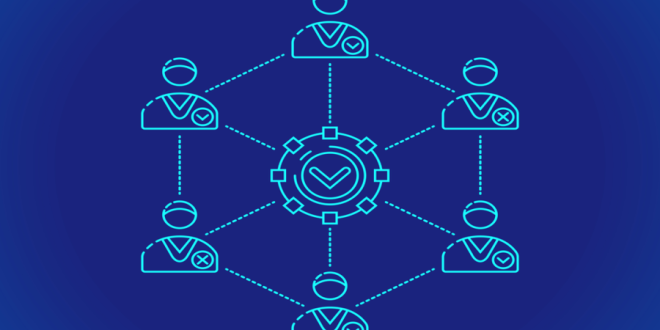Introduction
Scalability and consensus mechanisms are two critical aspects of blockchain technology. As the adoption of cryptocurrencies and decentralized applications continues to grow, addressing scalability challenges becomes increasingly important. In this article, we will explore the scalability challenges faced by blockchain networks and delve into the various consensus mechanisms used to maintain the integrity and security of these networks. By the end of this article, you will have a comprehensive understanding of the issues surrounding scalability and the consensus mechanisms employed to overcome them.
Understanding Scalability Challenges
Scalability Defined
Scalability refers to a system’s ability to handle an increasing amount of work or growing demands efficiently. In the context of blockchain technology, scalability encompasses the ability to process a larger number of transactions per second (TPS) and accommodate a growing user base without sacrificing performance or incurring high fees.
The Importance of Scalability in Blockchain
Blockchain networks, such as Bitcoin and Ethereum, face scalability challenges due to their decentralized nature and the consensus mechanisms they employ. As the number of users and transactions increases, these networks must adapt to maintain optimal performance. Without scalability, blockchain technology may struggle to meet the demands of real-world applications and hinder its widespread adoption.
Scalability Challenges in Blockchain

1. Network Congestion
Network congestion occurs when the number of transactions waiting to be processed surpasses the network’s capacity. In blockchain networks that rely on consensus mechanisms like Proof of Work (PoW), the limited block size and the time required to solve complex mathematical puzzles can result in slower transaction confirmations. As a result, the network becomes congested, leading to delays and increased transaction fees.
2. Block Size Limitations
Block size limitations impose a constraint on the number of transactions that can be included in a single block. Bitcoin, for instance, has a block size limit of 1MB. As the number of transactions increases, blocks may become full, causing delays in transaction confirmations. This limitation affects the overall scalability of the network.
3. Transaction Throughput
Transaction throughput refers to the number of transactions that can be processed within a given timeframe. Blockchain networks face challenges in increasing their transaction throughput while maintaining decentralization and security. Without efficient mechanisms in place, the transaction throughput can become a bottleneck for scalability.
4. Network Congestion
Network congestion is a significant challenge in blockchain networks, especially those with high transaction volumes. When the number of transactions waiting to be processed exceeds the network’s capacity, congestion occurs. As a result, transaction confirmations are delayed, and fees may increase due to users competing for limited block space.
To mitigate network congestion, blockchain networks are exploring various solutions. Some networks are implementing transaction batching, where multiple transactions are grouped together and processed as a single transaction. This approach helps reduce the overall number of transactions and optimizes block space utilization, resulting in faster confirmations and lower fees.
Another approach to address network congestion is implementing dynamic fee structures. By allowing users to adjust transaction fees based on network conditions, congestion can be managed more effectively. During times of high network congestion, users can opt to pay higher fees to prioritize their transactions, incentivizing miners to include them in the next block.
5. Block Size Limitations
Block size limitations pose a scalability challenge for blockchain networks. Bitcoin, for example, has a fixed block size of 1MB, which restricts the number of transactions that can be included in each block. As transaction volumes increase, blocks may become full, leading to delays in transaction confirmations.
To overcome this challenge, some blockchain networks are implementing block size optimizations or proposing block size increases. For instance, Bitcoin introduced Segregated Witness (SegWit), a protocol upgrade that effectively increases the block size by segregating transaction signature data. This optimization allows more transactions to be included in each block without exceeding the 1MB limit.
Other networks are exploring adaptive block sizes, where the block size dynamically adjusts based on network demand. By allowing flexible block sizes, blockchain networks can better accommodate increasing transaction volumes and improve scalability.
6. Transaction Throughput
Transaction throughput refers to the number of transactions that a blockchain network can process within a given timeframe. Achieving high transaction throughput is essential for blockchain’s widespread adoption in various industries.
7. Storage Requirements
As blockchain networks grow, the storage requirements for maintaining the entire transaction history become a scalability challenge. Traditional blockchain networks require nodes to store the complete history of all transactions, leading to increasing storage demands over time. This can limit the participation of nodes with limited storage capacity, hampering decentralization.
To address this challenge, blockchain networks are exploring alternative approaches such as pruning and archival nodes. Pruning allows nodes to discard older transaction data while retaining the necessary information for validating new transactions. Archival nodes, on the other hand, store the complete transaction history, but they are maintained by specialized entities or organizations rather than every network participant. These solutions help reduce storage requirements and improve scalability without compromising network security.
8. Interoperability and Compatibility
Interoperability and compatibility issues pose scalability challenges in blockchain ecosystems. As more blockchain networks emerge, it becomes crucial to enable seamless communication and data transfer between different chains. Without interoperability, each blockchain network operates in isolation, limiting its potential and hindering scalability.
To achieve interoperability, various solutions are being developed, such as cross-chain bridges and interoperability protocols. Cross-chain bridges facilitate the transfer of assets and data between different blockchain networks, enabling interchain communication. Interoperability protocols, like the Polkadot network, aim to create a unified framework where multiple blockchains can interact and share information securely. These solutions enhance scalability by fostering collaboration between blockchain networks and expanding their capabilities.
9. Energy Consumption
Energy consumption is a scalability challenge associated with consensus mechanisms like Proof of Work (PoW). PoW requires miners to solve computationally intensive puzzles, which demands significant computational power and electricity. As blockchain networks grow and attract more participants, the energy consumption of PoW-based networks becomes a concern.
To address this challenge, alternative consensus mechanisms with lower energy consumption have emerged. Proof of Stake (PoS) and variants like Delegated Proof of Stake (DPoS) offer energy-efficient alternatives to PoW. In PoS, validators are chosen based on the number of tokens they hold and stake, eliminating the need for resource-intensive mining operations. By transitioning to these energy-efficient consensus mechanisms, blockchain networks can achieve better scalability while reducing their environmental impact.
Consensus Mechanisms
Consensus mechanisms play a vital role in ensuring the security and integrity of blockchain networks. Here are four commonly used consensus mechanisms:
Proof of Work (PoW)
PoW is the consensus mechanism used by Bitcoin and several other blockchain networks. Miners compete to solve complex mathematical puzzles, and the first miner to find the solution earns the right to add the next block to the blockchain. While PoW is secure, it consumes significant computational resources and has scalability limitations due to its energy-intensive nature.
Proof of Stake (PoS)
PoS is an alternative consensus mechanism that relies on the concept of “staking” tokens. Instead of miners competing to solve puzzles, validators are chosen to create blocks based on the number of tokens they hold and “stake” in the network. PoS is more energy-efficient than PoW and has the potential to offer higher scalability.
Delegated Proof of Stake (DPoS)
DPoS is a consensus mechanism that introduces a layer of delegation. Token holders vote for a limited number of “delegates” who are responsible for creating blocks and maintaining the network. DPoS improves scalability by reducing the number of participants involved in block creation.
Practical Byzantine Fault Tolerance (PBFT)
PBFT is a consensus mechanism designed for permissioned blockchain networks. It allows for a high transaction throughput by leveraging a predetermined set of validators who collectively agree on the validity and order of transactions. PBFT sacrifices decentralization to achieve scalability and faster consensus.
Scalability Solutions
To address scalability challenges in blockchain, several solutions have been proposed and implemented. Here are three notable ones:
Sharding
Sharding is a technique that involves splitting the blockchain network into smaller partitions called shards. Each shard is responsible for processing a subset of transactions, enabling parallel processing and increasing the overall throughput of the network. Sharding has the potential to significantly enhance scalability in blockchain systems.
Layer 2 Solutions
Layer 2 solutions, such as the Lightning Network for Bitcoin, aim to improve scalability by moving a significant portion of transactions off the main blockchain. These solutions leverage smart contracts to enable faster and cheaper off-chain transactions, reducing the burden on the underlying blockchain.
Off-Chain Transactions
Off-chain transactions refer to transactions that occur outside the main blockchain. By conducting transactions off-chain, participants can enjoy faster confirmations and lower fees. Off-chain solutions often rely on trusted intermediaries or specialized protocols to maintain the security and integrity of the transactions.
Conclusion
Scalability remains a critical challenge for blockchain networks. However, various consensus mechanisms and scalability solutions are being developed to overcome these limitations. By incorporating techniques such as sharding, layer 2 solutions, and off-chain transactions, blockchain networks can improve their scalability without compromising security or decentralization. As the technology continues to evolve, it holds the potential to revolutionize various industries and transform the way we conduct transactions and exchange value.

I’m a highly experienced and successful crypto author who has helped thousands of people to invest in cryptocurrencies. I have a good knowledge and experience in the industry, and I have always been up-to-date with the latest developments. I’m a highly respected member of the crypto community, so if you are looking for someone to help you navigate the world of cryptocurrencies, then you can always contact me.
 Crypto Print
Crypto Print

